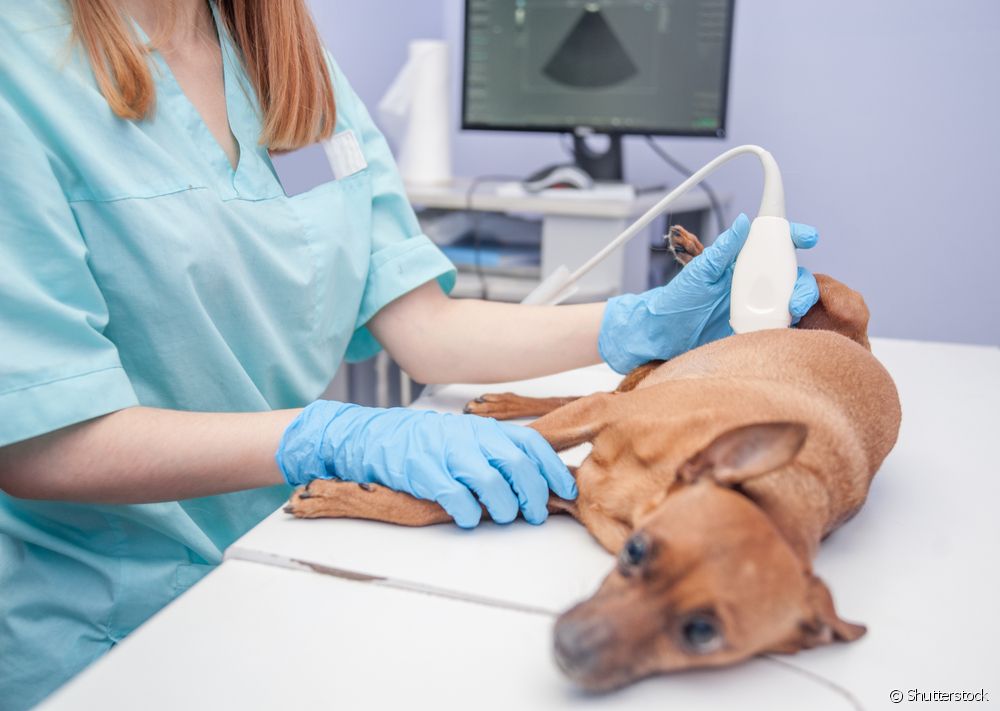Ultrasound for dogs: how does it work, in which cases is it indicated and how does it help in diagnoses?

Table of contents
How does dog ultrasound work? This is a question that many pet parents ask during veterinary check-up appointments. There are several tests that are necessary to assess how the dog's health is going, and canine ultrasound is one of them. The method is indispensable for the diagnosis of some diseases. To answer the main questions about ultrasound fordog, the Paws of the House interviewed veterinarian Letícia Gaudino, who specializes in diagnostic imaging (ultrasound and radiology) and works in São Paulo. Check out what she told us!
What is ultrasound for dogs and in which cases is the procedure indicated?
Veterinary ultrasound consists of a deeper observation of the dog's internal organs, which allows to detect possible diseases and other problems. "Ultrasound helps the clinical veterinarian in diagnosing and directing the best treatment," explains Letícia. According to the specialist, ultrasound in dogs must be requested by medical request and the device that isThe ultrasonographer is the most qualified professional to perform this type of examination, and is responsible for evaluating each organ.
"Ultrasound is indicated for: a routine preventive evaluation of the abdominal organs; evaluation of bladder lithiasis; suspected uterine infection (such as pyometra); for evaluation of the stomach and intestine in case of suspected foreign body; in the evaluation of the adrenal for endocrine disease; to check the kidneys; diagnosis and gestational monitoring, among other indications ", he explains.That is, there are different possibilities in which ultrasound for dogs is requested.
See_also: How do you identify a pedigree cat? Here are some of the physical patterns that define a lineage of cats
How does ultrasound for dogs work?
Canine ultrasonography is not very different from what is done in humans. The ultrasound device, with the aid of ultrasonic transducers and the application of gel in the region to be analyzed, emits sound waves that create an "echo" in the dog's body. Then, these waves reflect back and thus it is possible to obtain the images of the animal's organs in real time on the monitor of the device.With this, the sonographer is able to observe the internal structures - organs and tissues - more accurately and check for possible changes in the canine organism.
Ultrasound: does the dog feel pain during the examination?
As Letícia explains, canine ultrasound is not an invasive technique and, therefore, it is not something that will hurt or bother the dog. "The animal does not feel pain, but it can become impatient with the procedure. Therefore, we try to leave the room with less noise and try to do the exam in the animal's time ", he says. In general, the ultrasound is done in about half an hour, always taking into account thedoggy welfare.
Ultrasound for dog needs preparation
Some exams need important prior care, such as ultrasound for dogs. This preparation serves to facilitate the imaging diagnosis, which is the purpose of the exam. "The pet must be fasted for 8 hours and it must also be prevented from urinating at least 1 hour before the canine ultrasound. Water is at will, and if the clinical veterinarian judgesnecessary, a medication can be used to reduce the amount of gas in the intestine", says Letícia. During the examination, trichotomy, which consists of removing the hair in the region of the animal's body that is going to be analyzed, is also common.
See_also: Afghan Hound: everything you need to know about the dog breedThe price of ultrasound for dogs is usually affordable, but it is something that varies according to each region (state, city and even neighborhood). According to the professional, the average price is from R $ 140 to R $ 200, depending on which part of the body will be analyzed. Another factor that can influence the value is the type of device used, that is, whether it is a veterinary ultrasound with doppler or not.

